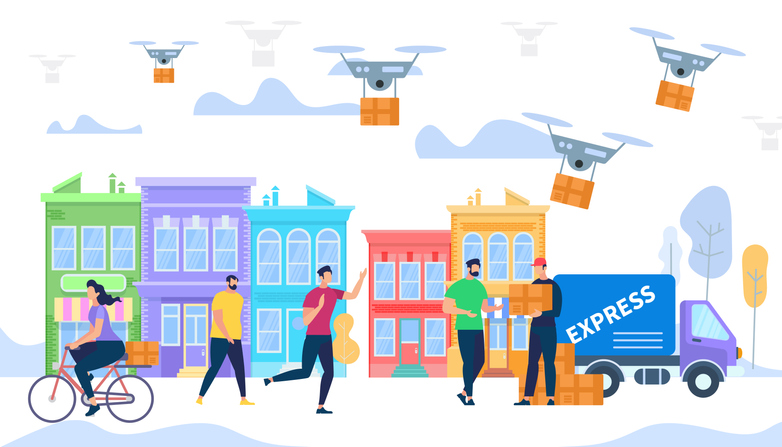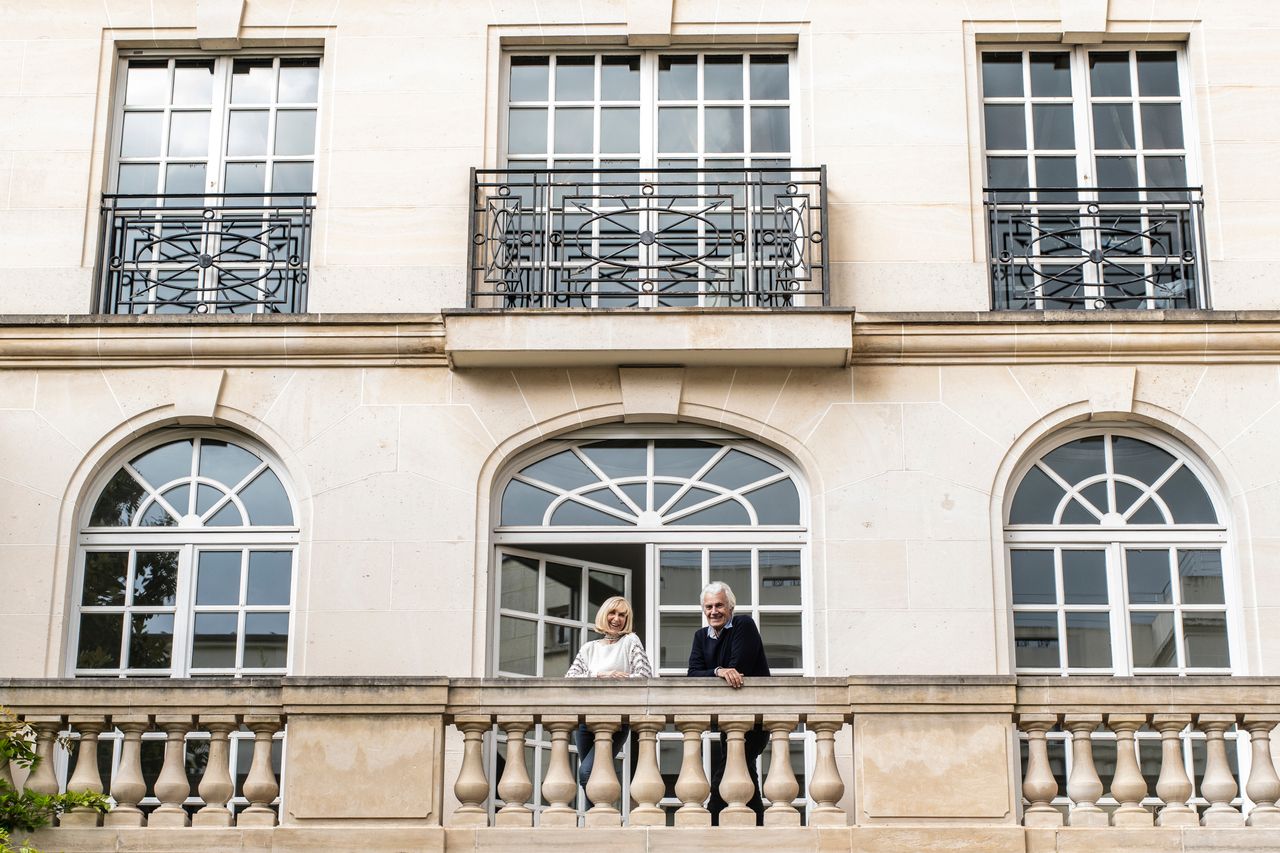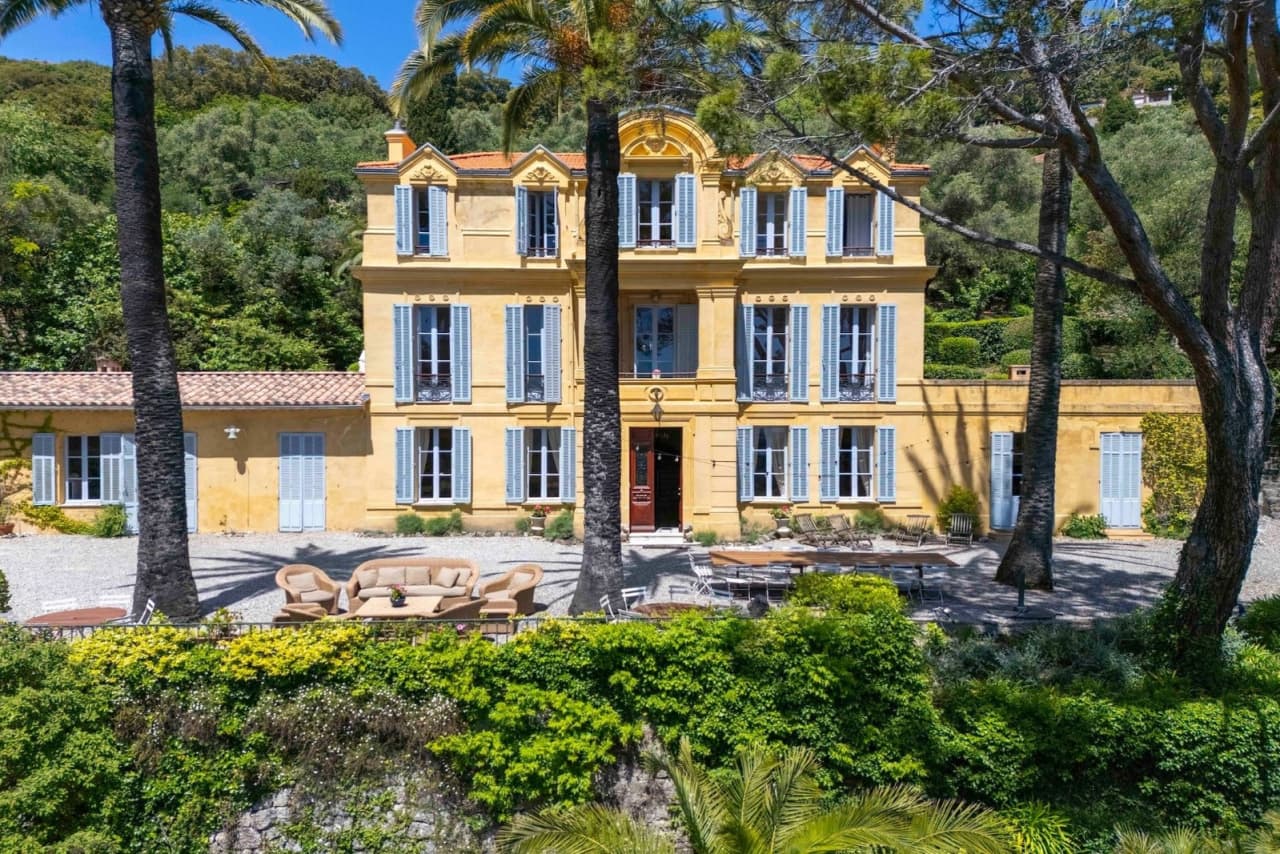Drones Are Poised To Reshape Home Design
Landing pads, special mailboxes and more: A future where delivery drones buzz through neighbourhoods could prompt architects and builders to rethink.
Let’s say you want a hamburger.
With a few taps on your phone—no onions, please—the order is placed, with delivery set for within the hour. Soon, your specially wrapped burger appears on the horizon, borne aloft by a humming drone. A retractable door on your rooftop opens to reveal a landing pad and delivery receptacle. The drone places the burger into a box, preferably heated, and a small elevator brings it into the house. “Ding.” Your app alerts you that your burger is warm and waiting.
It’s getting closer: A future where droves of drones buzz through neighbourhoods to drop off and pick up groceries, food orders and packages. Architects and builders might have to rethink overall home design to accommodate remote delivery, with drone landing pads mounted on kerbside mailboxes, built onto rooftops or perched on windowsills. This, in turn, could reshape entire neighbourhoods to include designated drone airspace and traffic patterns designed to ensure the safety of residents.
Drone divisions created by Amazon.com Inc., United Parcel Service and Google’s parent Alphabet Inc. have all received permission from the U.S. Federal Aviation Administration for limited deliveries, paving the way for commercial drone service. Amazon Prime Air is testing technology to deliver packages weighing up to 2.26kg in 30 minutes or less. Alphabet’s Wing trials in Christiansburg, Va., allow residents to get deliveries from FedEx Corp., Walgreens and local restaurants. In Florida, UPS subsidiary Flight Forward and CVS Health Corp. deliver prescription medications to residents of the Villages, the largest retirement community in the U.S.
Still, none of the major players have figured out a seamless way for consumers to receive their deliveries at home. Cargo landing in backyards and driveways raises safety questions regarding both people and packages.
At least one tech startup is working on a solution. Valqari, a Chicago company founded in 2017, is developing drone-delivery mailboxes that can accept all types of shipments, from retail packages to restaurant meals. The top of the mailbox acts as a landing pad, and the drone activates a retractable door to a space where packages can be safely deposited, explains Valqari founder and chief executive Ryan Walsh.
Mr Walsh says he envisions drone-delivery mailboxes mounted on rooftops and windowsills of homes or part of a centralized bank of mailboxes that can serve a neighbourhood or apartment complex. Someday, drone-delivery mailboxes will be “as common as a garage,” he says.
The idea isn’t far-fetched. In South Florida, the Paramount Miami Worldcenter condo building was designed to include a “skyport,” a platform on the roof that could someday accommodate vertical takeoff and landing, or VTOL, vehicles as a shuttle for residents. While the possibility of air taxis is years away, “I could see package delivery as happening sooner,” says developer Dan Kodsi, chief executive of Royal Palm Cos. “We have capability because elevators run all the way to the roof.” He adds that the skyport concept has been a selling point at Paramount Miami, where apartments are for sale from about US$750,000 to US$11 million for a penthouse. “Some people bought [units] knowing that it could potentially raise the value of their property,” he says.
Another concept for potentially incorporating drone delivery into residential development comes from Walmart Inc. The retailer <a”icon none” href=”https://pdfaiw.uspto.gov/.aiw?PageNum=0&docid=20190300202&IDKey=1EE7B2FDEDBE&HomeUrl=http://appft.uspto.gov/netacgi/nph-Parser?Sect1=PTO1%26Sect2=HITOFF%26d=PG01%26p=1%26u=/netahtml/PTO/srchnum.html%26r=1%26f=G%26l=50%26s1=20190300202.PGNR.%26OS=%26RS=” target=”_blank” rel=”noopener”>submitted a patent application for a delivery chute mounted onto an apartment building. Drone deliveries would be dropped through the chute and onto a conveyor belt, which would transport packages into the building’s mailroom for distribution.
When the majority of homes are outfitted with drone-delivery mailboxes and landing pads, they could form the cornerstone of “smart cities,” Mr Walsh projects. Outfitted with solar panels, the mailboxes could provide their own electricity—and even generate enough electricity to sell back to the grid. Data from meteorological sensors could ensure that drones will be able to land safely, with the added benefit of making weather forecasting hyper-local. Masses of mailboxes would also provide a place to put transportation sensors that could report real-time road and traffic conditions or telecom technology that could bolster wireless signals, making cities smarter. Mapping sensors would be particularly useful in remote or rural areas, which tend to be the least mapped.
Enthusiasts say that drone deliveries require less manpower than delivery trucks and would reduce both traffic congestion and fuel emissions. But before hamburgers can fly through the sky, a lot of things have to happen. Chief among them is a drone air-traffic control system to manage unmanned aircraft and protect the airspace from attacks. Currently, the FAA is working on a way to link drone registration to uniform tracking requirements, allowing the agency to identify drone operators and digitally follow their vehicles from takeoff to landing. Tech innovators must ensure that collision-avoidance technology can avert drone crashes. And companies themselves must surmount logistical challenges in stocking, deploying and recharging drones.
On the consumer end, the public will want assurances that their peace and privacy is protected. For example, in Australia, drone-delivery trials by Wing resulted in complaints from residents in suburban Canberra that the crafts were noisy and intrusive. Based on that feedback, Wing developed new propellers that emit a quieter, lower-pitched sound, an Alphabet representative says. In terms of privacy, she added that drone cameras take still, low-resolution images that are used strictly for navigation.
Overall, the main concern is safety, says German academic Mario Schaarschmidt, who specialises in logistics, technology and innovation management in services. Earlier this year, Dr Schaarschmidt and his colleagues at the University of Koblenz-Landau released a paper that aimed to assess whether consumers would willingly adopt drone deliveries. People who were interviewed in the research most frequently cited fears about their personal safety as well as financial risks of property loss.
Over time, Dr Schaarschmidt thinks widespread drone deliveries could become the norm for homes, “but only if the first deliveries with drones go smoothly. If you experience any problems, people won’t accept them.”
 Copyright 2020, Dow Jones & Company, Inc. All Rights Reserved Worldwide. LEARN MORE
Copyright 2020, Dow Jones & Company, Inc. All Rights Reserved Worldwide. LEARN MORE
This stylish family home combines a classic palette and finishes with a flexible floorplan
Just 55 minutes from Sydney, make this your creative getaway located in the majestic Hawkesbury region.
Ahead of the Games, a breakdown of the city’s most desirable places to live
PARIS —Paris has long been a byword for luxurious living. The traditional components of the upscale home, from parquet floors to elaborate moldings, have their origins here. Yet settling down in just the right address in this low-rise, high-density city may be the greatest luxury of all.
Tradition reigns supreme in Paris real estate, where certain conditions seem set in stone—the western half of the city, on either side of the Seine, has long been more expensive than the east. But in the fashion world’s capital, parts of the housing market are also subject to shifting fads. In the trendy, hilly northeast, a roving cool factor can send prices in this year’s hip neighborhood rising, while last year’s might seem like a sudden bargain.
This week, with the opening of the Olympic Games and the eyes of the world turned toward Paris, The Wall Street Journal looks at the most expensive and desirable areas in the City of Light.
The Most Expensive Arrondissement: the 6th
Known for historic architecture, elegant apartment houses and bohemian street cred, the 6th Arrondissement is Paris’s answer to Manhattan’s West Village. Like its New York counterpart, the 6th’s starving-artist days are long behind it. But the charm that first wooed notable residents like Gertrude Stein and Jean-Paul Sartre is still largely intact, attracting high-minded tourists and deep-pocketed homeowners who can afford its once-edgy, now serene atmosphere.
Le Breton George V Notaires, a Paris notary with an international clientele, says the 6th consistently holds the title of most expensive arrondissement among Paris’s 20 administrative districts, and 2023 was no exception. Last year, average home prices reached $1,428 a square foot—almost 30% higher than the Paris average of $1,100 a square foot.
According to Meilleurs Agents, the Paris real estate appraisal company, the 6th is also home to three of the city’s five most expensive streets. Rue de Furstemberg, a secluded loop between Boulevard Saint-Germain and the Seine, comes in on top, with average prices of $2,454 a square foot as of March 2024.
For more than two decades, Kyle Branum, a 51-year-old attorney, and Kimberly Branum, a 60-year-old retired CEO, have been regular visitors to Paris, opting for apartment rentals and ultimately an ownership interest in an apartment in the city’s 7th Arrondissement, a sedate Left Bank district known for its discreet atmosphere and plutocratic residents.
“The 7th was the only place we stayed,” says Kimberly, “but we spent most of our time in the 6th.”
In 2022, inspired by the strength of the dollar, the Branums decided to fulfil a longstanding dream of buying in Paris. Working with Paris Property Group, they opted for a 1,465-square-foot, three-bedroom in a building dating to the 17th century on a side street in the 6th Arrondissement. They paid $2.7 million for the unit and then spent just over $1 million on the renovation, working with Franco-American visual artist Monte Laster, who also does interiors.
The couple, who live in Santa Barbara, Calif., plan to spend about three months a year in Paris, hosting children and grandchildren, and cooking after forays to local food markets. Their new kitchen, which includes a French stove from luxury appliance brand Lacanche, is Kimberly’s favourite room, she says.
Another American, investor Ashley Maddox, 49, is also considering relocating.
In 2012, the longtime Paris resident bought a dingy, overstuffed 1,765-square-foot apartment in the 6th and started from scratch. She paid $2.5 million and undertook a gut renovation and building improvements for about $800,000. A centrepiece of the home now is the one-time salon, which was turned into an open-plan kitchen and dining area where Maddox and her three children tend to hang out, American-style. Just outside her door are some of the city’s best-known bakeries and cheesemongers, and she is a short walk from the Jardin du Luxembourg, the Left Bank’s premier green space.
“A lot of the majesty of the city is accessible from here,” she says. “It’s so central, it’s bananas.” Now that two of her children are going away to school, she has listed the four-bedroom apartment with Varenne for $5 million.
The Most Expensive Neighbourhoods: Notre-Dame and Invalides
Garrow Kedigian is moving up in the world of Parisian real estate by heading south of the Seine.
During the pandemic, the Canada-born, New York-based interior designer reassessed his life, he says, and decided “I’m not going to wait any longer to have a pied-à-terre in Paris.”
He originally selected a 1,130-square-foot one-bedroom in the trendy 9th Arrondissement, an up-and-coming Right Bank district just below Montmartre. But he soon realised it was too small for his extended stays, not to mention hosting guests from out of town.
After paying about $1.6 million in 2022 and then investing about $55,000 in new decor, he put the unit up for sale in early 2024 and went house-shopping a second time. He ended up in the Invalides quarter of the 7th Arrondissement in the shadow of one Paris’s signature monuments, the golden-domed Hôtel des Invalides, which dates to the 17th century and is fronted by a grand esplanade.
His new neighbourhood vies for Paris’s most expensive with the Notre-Dame quarter in the 4th Arrondissement, centred on a few islands in the Seine behind its namesake cathedral. According to Le Breton, home prices in the Notre-Dame neighbourhood were $1,818 a square foot in 2023, followed by $1,568 a square foot in Invalides.
After breaking even on his Right Bank one-bedroom, Kedigian paid $2.4 million for his new 1,450-square-foot two-bedroom in a late 19th-century building. It has southern exposures, rounded living-room windows and “gorgeous floors,” he says. Kedigian, who bought the new flat through Junot Fine Properties/Knight Frank, plans to spend up to $435,000 on a renovation that will involve restoring the original 12-foot ceiling height in many of the rooms, as well as rescuing the ceilings’ elaborate stucco detailing. He expects to finish in 2025.
Over in the Notre-Dame neighbourhood, Belles demeures de France/Christie’s recently sold a 2,370-square-foot, four-bedroom home for close to the asking price of about $8.6 million, or about $3,630 a square foot. Listing agent Marie-Hélène Lundgreen says this places the unit near the very top of Paris luxury real estate, where prime homes typically sell between $2,530 and $4,040 a square foot.
The Most Expensive Suburb: Neuilly-sur-Seine
The Boulevard Périphérique, the 22-mile ring road that surrounds Paris and its 20 arrondissements, was once a line in the sand for Parisians, who regarded the French capital’s numerous suburbs as something to drive through on their way to and from vacation. The past few decades have seen waves of gentrification beyond the city’s borders, upgrading humble or industrial districts to the north and east into prime residential areas. And it has turned Neuilly-sur-Seine, just northwest of the city, into a luxury compound of first resort.
In 2023, Neuilly’s average home price of $1,092 a square foot made the leafy, stately community Paris’s most expensive suburb.
Longtime residents, Alain and Michèle Bigio, decided this year is the right time to list their 7,730-square-foot, four-bedroom townhouse on a gated Neuilly street.
The couple, now in their mid 70s, completed the home in 1990, two years after they purchased a small parcel of garden from the owners next door for an undisclosed amount. Having relocated from a white-marble château outside Paris, the couple echoed their previous home by using white- and cream-coloured stone in the new four-story build. The Bigios, who will relocate just back over the border in the 16th Arrondissement, have listed the property with Emile Garcin Propriétés for $14.7 million.
The couple raised two adult children here and undertook upgrades in their empty-nester years—most recently, an indoor pool in the basement and a new elevator.
The cool, pale interiors give way to dark and sardonic images in the former staff’s quarters in the basement where Alain works on his hobby—surreal and satirical paintings, whose risqué content means that his wife prefers they stay downstairs. “I’m not a painter,” he says. “But I paint.”
The Trendiest Arrondissement: the 9th
French interior designer Julie Hamon is theatre royalty. Her grandfather was playwright Jean Anouilh, a giant of 20th-century French literature, and her sister is actress Gwendoline Hamon. The 52-year-old, who divides her time between Paris and the U.K., still remembers when the city’s 9th Arrondissement, where she and her husband bought their 1,885-square-foot duplex in 2017, was a place to have fun rather than put down roots. Now, the 9th is the place to do both.
The 9th, a largely 19th-century district, is Paris at its most urban. But what it lacks in parks and other green spaces, it makes up with nightlife and a bustling street life. Among Paris’s gentrifying districts, which have been transformed since 2000 from near-slums to the brink of luxury, the 9th has emerged as the clear winner. According to Le Breton, average 2023 home prices here were $1,062 a square foot, while its nearest competitors for the cool crown, the 10th and the 11th, have yet to break $1,011 a square foot.
A co-principal in the Bobo Design Studio, Hamon—whose gut renovation includes a dramatic skylight, a home cinema and air conditioning—still seems surprised at how far her arrondissement has come. “The 9th used to be well known for all the theatres, nightclubs and strip clubs,” she says. “But it was never a place where you wanted to live—now it’s the place to be.”
With their youngest child about to go to college, she and her husband, 52-year-old entrepreneur Guillaume Clignet, decided to list their Paris home for $3.45 million and live in London full-time. Propriétés Parisiennes/Sotheby’s is handling the listing, which has just gone into contract after about six months on the market.
The 9th’s music venues were a draw for 44-year-old American musician and piano dealer, Ronen Segev, who divides his time between Miami and a 1,725-square-foot, two-bedroom in the lower reaches of the arrondissement. Aided by Paris Property Group, Segev purchased the apartment at auction during the pandemic, sight unseen, for $1.69 million. He spent $270,000 on a renovation, knocking down a wall to make a larger salon suitable for home concerts.
During the Olympics, Segev is renting out the space for about $22,850 a week to attendees of the Games. Otherwise, he prefers longer-term sublets to visiting musicians for $32,700 a month.
Most Exclusive Address: Avenue Junot
Hidden in the hilly expanses of the 18th Arrondissement lies a legendary street that, for those in the know, is the city’s most exclusive address. Avenue Junot, a bucolic tree-lined lane, is a fairy-tale version of the city, separate from the gritty bustle that surrounds it.
Homes here rarely come up for sale, and, when they do, they tend to be off-market, or sold before they can be listed. Martine Kuperfis—whose Paris-based Junot Group real-estate company is named for the street—says the most expensive units here are penthouses with views over the whole of the city.
In 2021, her agency sold a 3,230-square-foot triplex apartment, with a 1,400-square-foot terrace, for $8.5 million. At about $2,630 a square foot, that is three times the current average price in the whole of the 18th.
Among its current Junot listings is a 1930s 1,220-square-foot townhouse on the avenue’s cobblestone extension, with an asking price of $2.8 million.
This stylish family home combines a classic palette and finishes with a flexible floorplan
Just 55 minutes from Sydney, make this your creative getaway located in the majestic Hawkesbury region.






















